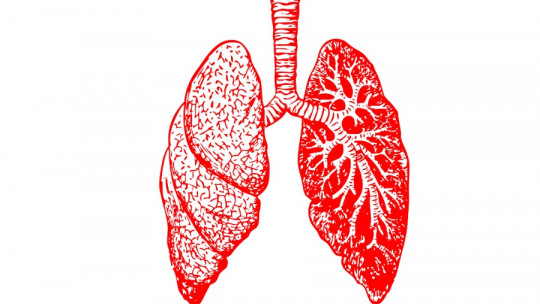
A living being is a material group of complex organization that exchanges matter and energy with the environment in an orderly manner. To be considered as such, a living entity must be able to translate the energy consumed from the environment into growth, relationship and reproduction, with the ultimate goal of leaving its genetic mark on future generations at all costs.
Living beings (specifically humans) are a continuous exchange: we produce heat, consume oxygen, release carbon dioxide and process organic matter at all times of our lives. Therefore, we have a series of mechanisms that allow us to maintain body homeostasis, or what is the same, an internal balance despite environmental changes. In short: we are alive because we self-regulate beyond the parameters that surround us.
All of these concepts can be reduced to their minimum expression, which is a cell dividing by mitosis and giving rise to a new lineage or, failing that, replacing a tissue that has been damaged. To understand all these basal mechanisms, It is necessary to be clear about a series of concepts, the most important being those related to the definition and functionality of metabolic energy Stay with us, because we will tell you everything about her in the following lines.
What is metabolic energy?
Metabolism is defined as the quality that living beings have of being able to change the chemical nature of certain substances On a practical level, this set of processes is essential for cells to grow, divide, maintain their structures over time and respond to stimuli, among other things.
The “problem” is that, for the production of movement or the synthesis of macromolecules, cell bodies require energy. So that, The behavior of living beings is codified (to a large extent) based on obtaining energy from the environment so that your cells can use it to give rise to the relevant biochemical reactions and physicochemical processes.
Based on all these processes, a series of immovable generalities can be established. Among them, we find the following:
The ATP molecule draws our special attention (adenosine triphosphate), since cells use it to capture, transfer and store the free energy necessary to carry out chemical work. Understanding metabolic energy without ATP is an impossibility, since this molecule functions as a clear currency of exchange at an energy level.
What is metabolic energy translated into?
For its part, metabolic energy can be understood as that which It is generated by living organisms thanks to chemical oxidation processes (at the cellular level), a product of the foods they ingest This parameter can be understood in different ways, but we find it most useful to apply it to the daily reality of human beings. Go for it.
Basal metabolic rate (BMR)
The basal metabolic rate (BMR) is the minimum amount of metabolic energy that the body requires to stay alive. In a state of rest, although it may not seem like it, your body is consuming 60 to 75% of the calories ingested since it requires that energy to keep the heart pumping, so that you can breathe, and even so that the mind can function properly.
In a basal state, the human brain can consume about 350 calories a day, that is, 20% of the BMR. It is not surprising that we feel tired after a long day of studying, since, literally, this organ is a true source of burning fat and other energy resources. In addition to thinking, breathing, and blood pumping, metabolic energy is also used in cell growth, body temperature control, nerve function, and muscle contraction (both voluntary and involuntary).
This value can only be reliably calculated by a nutritionist, as it depends on factors intrinsic to the individual and certain environmental parameters. In any case, a rudimentary estimate can be obtained using the following equations:
Total energy expenditure (GET)
Total energy expenditure is similar to the basal metabolic rate, but in this case the physical activity carried out by the individual is taken into account We do not necessarily understand “physical activity” as running a marathon, since working standing at a bar, waiting as a waiter or simply walking to reach a specific place is an additional effort beyond the maintenance of vital functions.
In addition to physical activity, Total energy expenditure also takes into account endogenous thermogenesis (ET), which in turn encompasses the thermic effect of feeding (ETA) This last parameter reflects the energy necessary to digest, absorb and metabolize nutrients. In this case, the metabolic energy directed to the process and obtained as a result of it depends on the nature of the foods and their mixtures in the diet, but it represents approximately 10% of the total energy consumed.
Thus, we can collect all the terms included so far in a simple equation, which reflects where the metabolic energy obtained after ingesting organic matter from the environment goes:
Total energy expenditure (100%): Basal metabolic rate (70%) + physical activity (20%) + endogenous thermogenesis (10%)
Again, it is necessary to emphasize that These values vary widely between individuals For example, a very sedentary person will spend 10% of energy on non-voluntary physical activity (getting up, going shopping or walking to work), while an athlete will use 50% of the calories consumed on exercising their muscles and body.
In addition to this, it should be noted that the basal metabolic rate decreases by 1-2% for each decade after 20 years of age. Thus, statistically, an 80-year-old person at rest will burn fewer calories than a 20-year-old, simply due to their physiology and slowed metabolism.
Metabolic energy in other animals
Human beings tend to focus attention on our species, but we must not forget that what has been described so far is applicable to all homeothermic living beings that is, one that can maintain a body temperature despite environmental changes (mammals and birds).
Beyond numbers and percentages, it is truly interesting to know that animals make a clear exchange when it comes to obtaining metabolic energy. For example, when a cheetah hunts a herbivorous mammal, it is expending an astronomical amount of energy during the chase in order to find a prey. Worth?
The theory of optimal foraging (TFO) is a behavioral prediction model that tries to explain the behaviors of living beings based on this premise This postulation announces the following: to maximize fitness, an animal adopts a foraging strategy that provides the greatest benefit (energy) at the lowest cost, maximizing the net energy obtained.
Thus, an animal will not eat anything that causes it to expend more energy in search than it obtains in consumption. Perhaps now you understand why, for example, some huge predators (such as bears) completely ignore small flying birds and other vertebrates belonging to the microfauna: it is simply not worth trying to hunt them on an energetic level.
Summary
As you have seen, The topic of metabolic energy ranges from ATP and the cell to the behavior of living beings Organisms are open systems and, as such, we continually exchange matter and energy with the environment. Therefore, we adapt in order to maximize the effectiveness of our habits, in order to stay longer and increase the chances of survival.
In the end, everything can be reduced to a scale: if what is obtained weighs more than what was spent, it is usually viable at an evolutionary level. If something brings more benefits than harm, it usually helps animals survive another day so they can reproduce.








